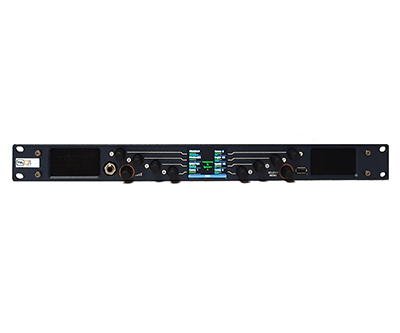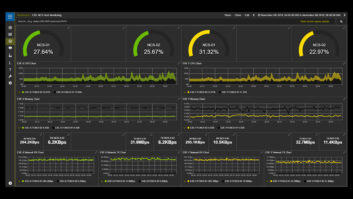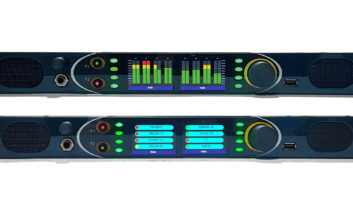TSL is launching a new SMPTE 2110-10 and AES67 complaint version of its MPA1-MIX monitoring units.
The MPA1-MIX-NET intuitive 1U monitor unit provides 64 channels through a 1G AoIP connection, and a further 64 x MADI channels with an optional MADI SFP to provide user access to a maximum of 128 inputs, said the company. The unit also has native support for NMOS IS-04 and IS-05.
It features eight dedicated rotary controls to create a monitor mix of up to eight mono or stereo sources, with operators able to bank up to 16 independent mixes which can be recalled with a user-friendly ‘scroll to select’ function.

Designed for a variety of operational positions, MPA1-MIX models make it easy to create a variety of custom mixes, added TSL.
The introduction of the MPA1-MIX-NET extends the company’s MPA1 range to six MIX units and six SOLO variants for very simple audio monitoring. All are 1U high and have a compact unit depth of 100mm, while a fanless design makes them suitable for installation in all locations.
In addition, with distributed and remote production models becoming more established as broadcast workflows, the MPA1-MIX-NET also features comprehensive web and SNMP support. Its built-in web server and integrated Ethernet connection are designed to enable remote configuration and operation of networked units via a web browser, whilst SNMP integration enables a broadcast control system to automate configuration changes, said TSL.
“The broadcast environment is constantly evolving and the expansion of the MPA1 family gives broadcasters the opportunity to choose the interface that best suits their needs,” said TSL’s products and technology director, Mark Davies. “The range offers support for ST 2110, 3G/HD/SD-SDI, Dante, MADI, AES and analogue interfaces, in both solo and mix versions. As manufacturers it’s our job to stay connected with our customers and ensure we support them as their workflows continue to change, with no compromise in performance.”







